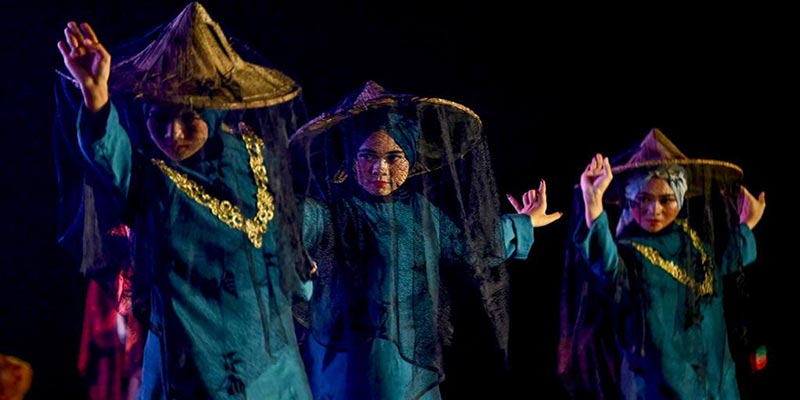Celebrating the role of local customary law in the protection of refugees in Aceh, Indonesia
Every year the people of Aceh, Indonesia come together to celebrate their connection to the seas that surround their land and the fishermen who earn their livelihood fishing those waters.

This year at the centre of the Kenduri Laot (Festival of the Sea) was a performance celebrating the rescue of thousands of Rohingya refugees by Acehnese fishermen. The performance is part of a three year research project, Verandah of Protection (funded by the British Academy) in which Martin Jones and Alice Nah worked with a research team of local Acehnese activists and Rohingya refugees (some of whom were themselves rescued by the fishermen) through our local partner in Aceh, Yayasan Geutanyoe.
Over the last three months, Rika Syafriliza from Yayasan Geutanyoe, worked with a team of more than 60 dancers, musicians and choreographers from the Indonesian Institute of Cultural Arts Aceh (Institut Seni Budaya Indonesia Aceh) and Sanggar Nurul Alam to create a performance drawing upon Ratoh Jaroe, an Acehnese traditional dance form, to tell the story of these rescues, based upon interviews and focus groups conducted through the project.
The performance, entitled Tuah Bak Jaroe Panglima (trailer available here), highlighted key findings from the project: the overlooked role of local customary norms in refugee protection, which in the case of Aceh, meant the role of the local customary law of the sea.
The performance showcased the ongoing significance of the Panglima La'ôt (Commanders of the Sea), an institution established during the reign of Sultan Iskandar Muda (1583-1636), that continues to enforce Hukôm Adat La'ôt, customary maritime law, which oblige fishermen to rescue all life at sea. Rescues of Rohingya refugees are both an expression of Hukôm Adat La'ôt as well as the Acehnese cultural norm of Pemulia Jamee, the welcoming of guests.
The performance on Saturday, 26 March 2022, was to a packed audience at the heritage site, Gunongan, built by Sultan Iskandar Muda for his wife Putroe Phang as a reminder of her home on the Malay Peninsula. It drew the support of a range of local institutions, and received positive news coverage (see: Aceh Journal National Network and Antara Aceh and internationally La Verdad).